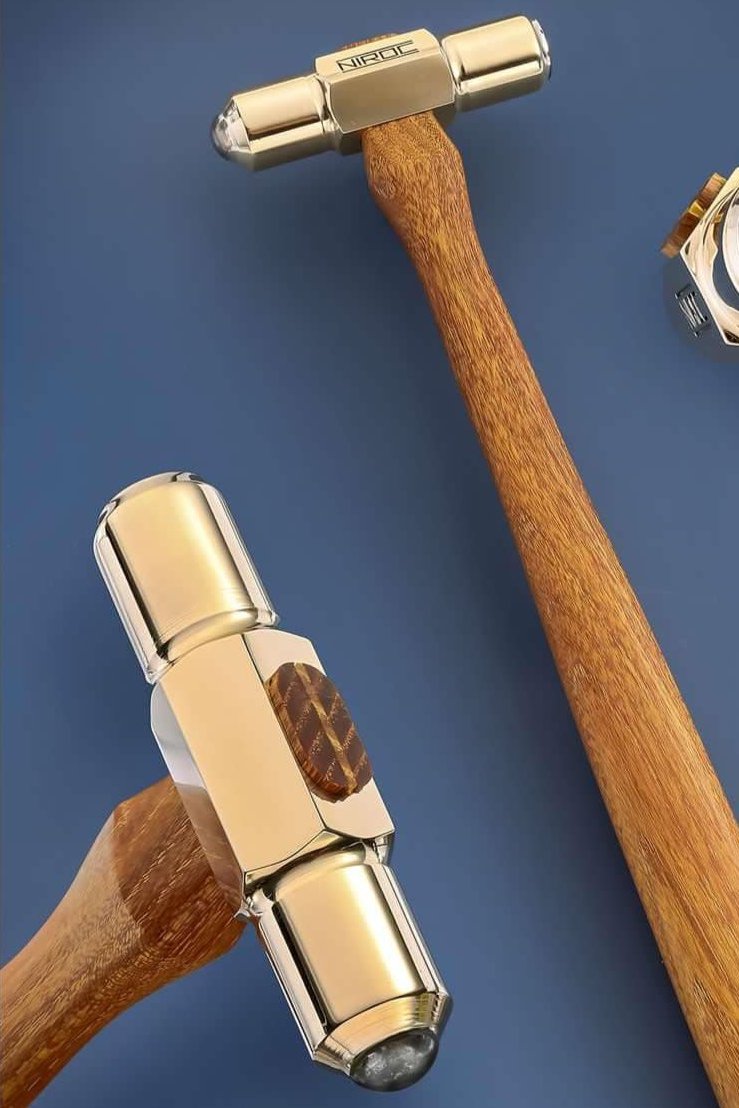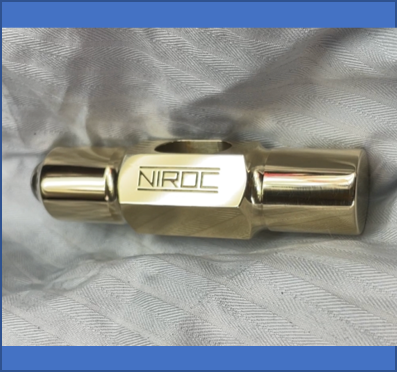

Tungsten carbide hammer - Straightening hammer for knife blades - NIROC
Tax included.
Here is the well-known carbide hammer - the NIROC hammer that helps you straighten crooked steel pieces and knife blades. A few light taps with the hammer on the bend, and the steel straightens almost magically. Feel free to use it together with the NIROC flat-ground bench hammer as a base.
The original Tungsten Carbide Niroc Knockometer
Carbide hammer for straightening blades
"If your blade is a rockin', the NIROC comes a knockin'"
You can straighten a regular piece of unhardened steel with a regular hammer, but to straighten knife blades that have bent during the hardening process, you need something harder. That's why this hammer has a carbide ball in the front. It gives you the hardness you need to straighten the blade without it cracking.
The rounded carbide side of the hammer gives you the ability to straighten the blade.
The flat side is perfect for riveting brass pins and other small items!
See the hammer in use here, by the inventor himself:
More information from the manufacturer
Weighing approximately 160 grams (5.6 oz), the Niroc Knockometer was originally designed as a blade straightening hammer (tagane hammer). It is also highly valued by sheet metal workers, toolmakers, leatherworkers, saw doctors and tool repairers. This is a useful tool for anyone who needs a small but very hard hammer.
These are handmade, and great care is taken to create a beautiful tool that, with proper care, will last a long time. The hammer heads are machined from brass billets. Brass is chosen for its relative density (heavier than steel for the same volume) and ability to deform. This "sets" the carbide and reduces the likelihood of chipping or breaking. The carbide inserts are silver brazed in place with an alloy containing 45% silver, and the process ensures that the insert is securely seated.
The eye in my hammers is an integral part of the design and ensures that the head sits securely on a shaft, either fitted by me or by you. I machine the eye with an hourglass-shaped taper, making it narrower in the middle. When attached to a tapered shaft and wedged in place, there is minimal risk of it coming loose.
Hammer handle:
Each handle assembled by me is shaped to fit the hammer eye precisely and is carefully wedged into place with Osage Orange wedges. This is a time-consuming process, but it is worth the effort to achieve an optimal result.
The Australian factory-made handles are made from "spotted gum," a wood known for its strength and suitability for tool handles. I only use about 70% of the factory handles, removing anything that doesn't meet my quality standards. While they are not always symmetrical, this gives the user a sense of the hammer's orientation and is comfortable to use. These handles are shorter and range in color from light brown to dark red, depending on the origin of the wood.
My guarantee:
If something is not right, I will fix it or replace it. If something goes wrong, let me know.
I have worked in customer service my entire professional life, directly and indirectly. I know things can go wrong, but how I handle them defines my business. Please give me the opportunity to make it right.
Another example, which also shows in detail how you can straighten your crooked leaves, and even make your own!


